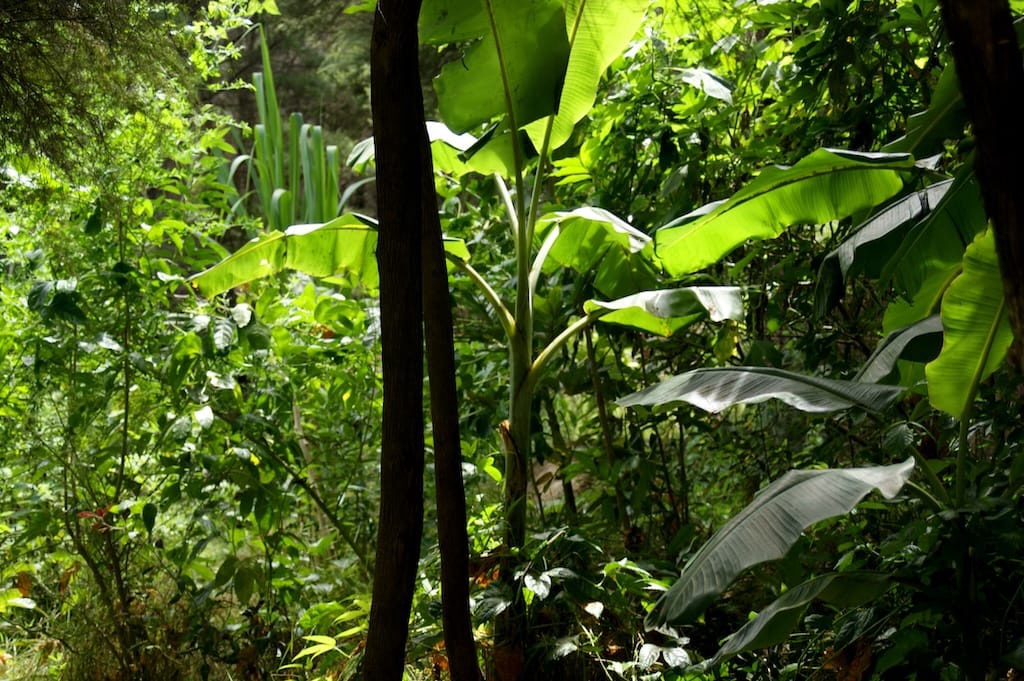
This land had been stripped of trees for at least one hundred years
Wild Seed
wild seed follows the evolution of a novel ecosystem using rewilding and regenerative design on a 2 hectare (5 acre) block in Northland, New Zealand, which was originally clear-felled for sheep farming, then eventually completely enveloped in gorse and other invasive species. Ongoing extractive farming practices along with poor soil, relentless wind, low rainfall, isolation and the impenetrable nature of the invasive species had created an extremely formidable prospect and the land languished unsold on the market for two years.
Five banana stems and a few passionfruit seedlings were planted in a keyhole cut into the gorse, down in the gulley of a watercourse. Shelter belts grow, and slowly the moisture is retained by the plants, creating more microclimates and allowing more species to flourish. Eventually the foodforest takes on a life of its own, wild plants, both native and exotic, fill the forest layers from ground cover to understory, shrubs and trees, climbers to canopy. Meadows form and flourish, then are cut a few times a year and left in-situ to build soil.
Biodiversity begets biodiversity.